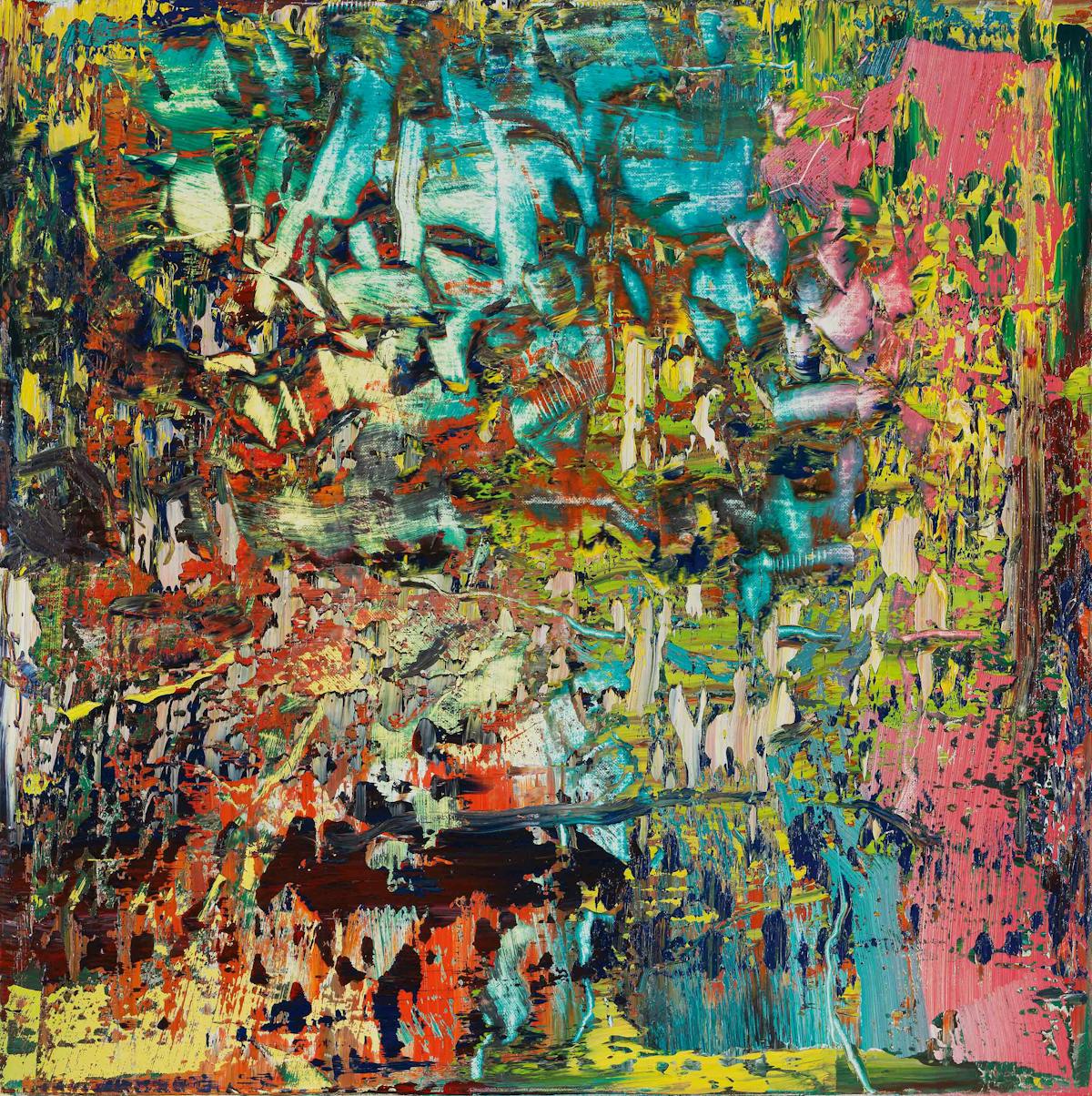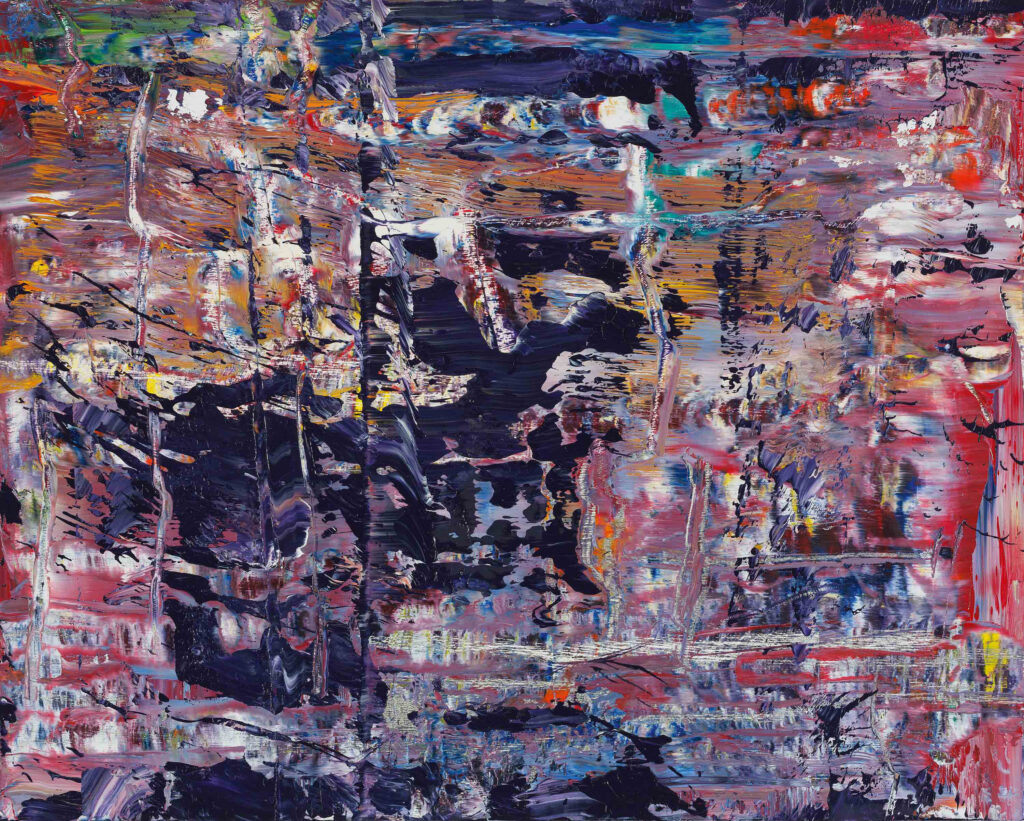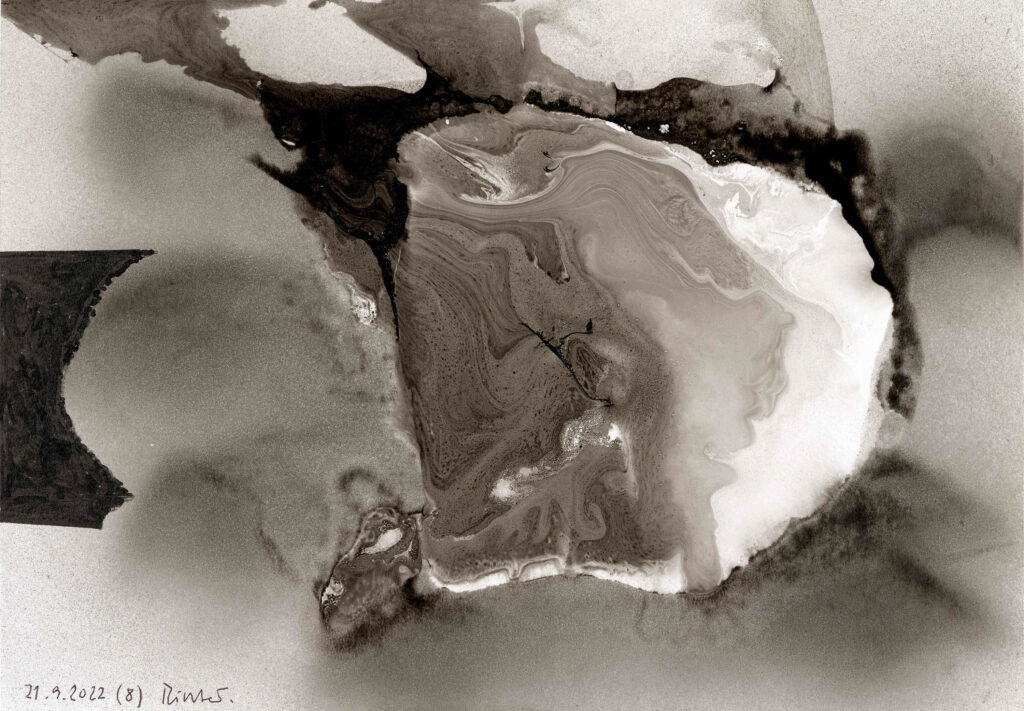Gerhard Richter Roars at Chelsea
In his 10th decade, the German blue chipper still has it.

The David Zwirner Gallery’s exhibition of recent work by Gerhard Richter is meant to be a swan song, but it lands like a clarion call. To what, it’s hard to say, because in old age Mr. Richter still speaks so many artistic languages; cold and hot, imposing and intimate, personal and planetary. It’s all abstract, and it’s all awesome.
The show has three movements. First is a collection of works, each called “Abstraktes Bild,” from 2016 and 2017. The German master has called the works his final paintings. Next are fresh creations on paper from 2021 and 2022. Finally, there is a glass sculpture, “3 Scheiben (3 Panes of Glass),” from this year. Mr. Richter, at 91, has created work worth seeing. As Mr. Zwirner tells the Sun, Mr. Richter’s “career has been a journey from strength to strength.”
Mr. Richter is revered by critics, but he is prized by the affluent. When his “Abstraktes Bild (599)” was sold at Sotheby’s in 2015 for $44.52 million, it broke twice over a record, set by himself, for a price paid at auction for work by a contemporary artist. While he has since been surpassed by Jeff Koons and David Hockney, Mr. Richter is one of the artists whose work fetches fortunes.
New Yorkers might have seen Mr. Richter’s “Birkenau” at the Metropolitan Museum of Art. In it, the German artist attempted to make figurative drawings based on four secret photographs taken at Auschwitz-Birkenau by a member of the Sonderkommando at the camp. Mr. Richter ended up lathering paint over his drawings, creating canvases the colors of ash and blood. They are abstract after the same fashion as death.
Mr. Richter, then, is known to New York but new to Mr. Zwirner’s gallery, which he joined in the fall. The painter makes his debut with 14 canvases, 76 drawings, and that one sculpture. The Met celebrated 40 years of his painting 20 years ago. With Jasper Johns and Alex Katz, Mr. Richter joins a troika of long-lived geniuses of the canvas.
Just the paintings would have been enough. They lack individual names, but overflow with distinct personalities. Unencumbered by wall text, they are less objects for analysis than invitations to immersion. One, just to the right as the visitor enters, looks as if it bears the imprint of Claude Monet’s “Water Lilies” series, its shimmering and aquatic quality, all horizon and rhythmic rippling.
Another is more verdant and vegetative, slathered rectangles of green paint that suggest something organic, like soil thick with life at the heart of a forest, both silent and teeming. The closer you get to Mr. Richter’s paintings, the more you see; the thickness of the paint, making the canvases almost three-dimensional where it clumps and swells, as if the paint itself will have its say.
Jackson Pollock and Helen Frankenthaler are obvious influences, as if “Autumn Rhythm” could be an ancestor to these color-intoxicated progeny. The Sun overheard one visitor, who appeared 70 years Mr. Richter’s junior, observing that these murals by Mr. Richter possess the drippy dynamism of being painted “after taking ketamine.” Their smudged surfaces and creamy brushstrokes create the impression of both a breakthrough and a coverup.

The former director of the Kunstmuseum Winterthur in Switzerland, Dieter Schwarz, a close associate of Mr. Richter, told the chic crowd gathered for the opening that the German’s method attempts to “wipe out every gesture,” the thick layers of paint both fossilizing and erasing the movements that made them. The effect is texture from up close and almost digital from far away, as if a lava lamp spilled out onto the canvas.
Another painting features flesh-colored bands that look like stacked intestines, possessed of an uncanny musculature, like a person turned inside out. Philip Guston’s tubular organ-people come to mind, halfway between abstraction and representation. There is a painting that is an explosion of yellow, and another that is a deconstructed rainbow, ROYGBIV melted down.
Beyond the “Abstrakters Bilder“ are the drawings. They come in two sets. The first, in black, white, and grays, were made with ink and pencil on 8×11 paper, that old printer standby. They are — pick your word — scarred, adorned, gouged, with shapes geographic and cartographic. It is difficult to know whether these are meant to convey continents or microscopic vistas.

The scarification of the white page, its pockmarked intrigue, can appear viral, almost like the advance of a contagion. Some of the drawings are built from lean lines, others are swirling, gaseous, or fungal. Some look like a cold front moving in, majestic after the fashion of a storm on Saturn, impossible turbulence at an unimaginable distance.
Last is a series called “mood,” a sequence of 31 works on that same white paper but illustrated with inkjet, swirls of red, greens, and yellows. They are reminiscent of the images beamed back from the Webb Telescope, their hi-res accuracy indistinguishable from flights of artistic fancy. In one, a star’s death is caught as an ecstatic emission of light. It’s hard to shake the impression that the interstellar image could have been rendered by Mr. Richter.

